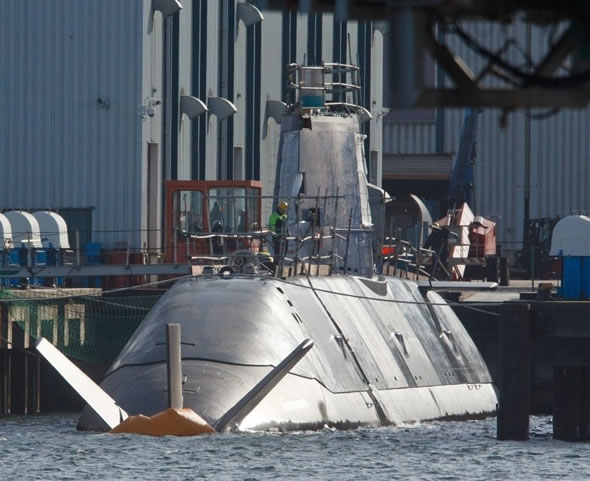
Based in Haifa, the Israeli Navy currently operates four modern,diesel-electric, Dolphin-class submarines designed and constructed by Germany's Howaldtswerke-Deutsche Werft (HDW). The first three were commissioned between 1999 and 2000; two were donated by Germany and the cost of the third was split between Germany and Israel. The country's fourth and fifth submarines, agreed to in 2006, are advanced Dolphin-class vessels equipped with air-independent propulsion (AIP); the INS Tanin was delivered to the Israeli Navy in May 2012. [1] Israeli crews have recently been training in Germany with the fifth submarine, the INS Rahav, and it is schedule to be delivered to Israel in late 2015. During a visit to Germany in 2015 to inspect the INS Rahav, Israeli President, Reuven Rivlin, reportedly discussed a past agreement to purchase a sixth submarine. [2] In February 2012, Germany and Israel issued the contract for a sixth AIP-equipped Dolphin submarine, which is currently being constructed at the HDW shipyard. The German government is reportedly covering a third of the total $1.8 billion cost of the three advanced Dolphin-class vessels. [3]
The modernized Dolphin-class combines a conventional diesel lead-acid battery system and an air-independent propulsion system (AIP), which makes the vessel extremely quiet and allows it to remain submerged for up to a week without surfacing. [4] It is said to have a maximum speed of 20 knots, and a range of 4,500km. [5] The new boats will be equipped with 650mm torpedo tubes—leading to much speculation that the Israelis intend to outfit the submarines with nuclear-armedcruise missiles
Before obtaining the Dolphins, the Israeli Navy depended upon three Gal-class submarines, designed by Germany for Israel, and constructed at the Vickers Shipyard in theUnited Kingdom between 1973 and 1977. The Gal-class is a modified Type 206A coastal submarine. The Gals were decommissioned when the Dolphins were commissioned into the Israeli Navy, and Israel planned to sell the vessels. However, no buyer was found and one of the boats was returned to Israel, where it is currently exhibited at the Haifa Naval Museum. [7]
Israel views its submarine force as critical to national security because previous conflicts involving the country began with naval blockades. Israel's submarines are also intended to exercise control over the eastern Mediterranean Sea and secure sea lines of communication, as Israel is dependent on imports of grain, crude oil, and raw materials. [8] There has been consistent speculation that Israel's submarines could be refitted to carry missiles armed with nuclear warheads in order for the country to maintain a survivable second-strike capability. Acknowledging Israel's lack of strategic depth, officials have asserted that only submarines can provide a secure weapons platform in the future.

http://www.nti.org/media/pdfs/israel_active_duty_submarines.pdf?_=1341337447
http://www.nti.org/media/pdfs/dolphin.pdf?_=1341869218
http://www.nti.org/media/pdfs/gal_type_540_1.pdf?_=1341869416
http://www.nti.org/analysis/articles/israel-submarine-capabilities/
